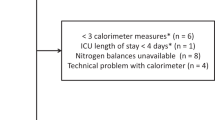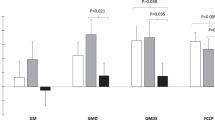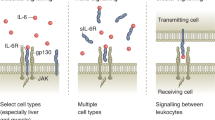Abstract
Catabolism of lean body mass (particularly muscle) occurs in sepsis and other forms of critical illness despite apparently adequate nutritional support. The determination of the optimal balance of carbohydrate and fat intake in this circumstance should be based on the resulting effect on the maintenance of lean body mass, and the nature and extent of any side effects. The general stress response involves a disruption in normal glucoregulation, in that hepatic glucose production is accelerated and the normal blood glucose lowering action of insulin is diminished. Nonetheless, the capacity to oxidize glucose once inside the cells is not impaired. Lipolysis, or the breakdown of peripheral triglycerides to free fatty acids (FFA) and glycerol, is accelerated in critical illness, to a greater extent than fat oxidation. Provision of exogenous fat maintains fat stores, but has minimal effect on the direct oxidation of plasma FFA. From the results of oxidation studies, it seems that about 5 mg kg·min of glucose can be readily oxidized, and the balance of energy will be supplied by the oxidation of fat, either endogenous or exogenous. However, an additional consideration in determining the optimal caloric substrate is that insulin is a potent anabolic hormone and stimulates muscle protein synthesis. Consequently, provision of exogenous insulin enhances retention of muscle. This procedure dictates that almost all non-protein calories be provided as carbohydrate to avoid hypoglycemia. Preliminary studies suggest this may be the optimal approach in critically ill patients.
Glucose and fatty acids are the major energy substrates in the body. The oxidative metabolism of these substrates provides the ATP needed for physiological function, including protein synthesis. Over the past 20 y, development of new techniques in nutritional support have made it possible to provide large amounts of carbohydrate and fat to critically-ill patients, along with protein or amino acids. However, despite providing such patients with what should be more than adequate caloric and protein intake, critically ill patients lose lean body mass (Streat et al, 1987), largely because of persistent muscle catabolism (Sakurai et al, 1995). The general relation between energy substrate metabolism and maintenance of lean body mass has been recognized for many years (Calloway & Spector, 1954), so it is important to examine the alterations in energy substrate metabolism that occur in response to critical illness that may play a role in causing the persistent catabolism of muscle protein.
This is a preview of subscription content, access via your institution
Access options
Subscribe to this journal
Receive 12 print issues and online access
$259.00 per year
only $21.58 per issue
Buy this article
- Purchase on Springer Link
- Instant access to full article PDF
Prices may be subject to local taxes which are calculated during checkout
Similar content being viewed by others
Author information
Authors and Affiliations
Rights and permissions
About this article
Cite this article
Wolfe, R. Sepsis as a modulator of adaptation to low and high carbohydrate and low and high fat intakes. Eur J Clin Nutr 53 (Suppl 1), s136–s142 (1999). https://doi.org/10.1038/sj.ejcn.1600754
Published:
Issue Date:
DOI: https://doi.org/10.1038/sj.ejcn.1600754
This article is cited by
-
Metabolic support in the critically ill: a consensus of 19
Critical Care (2019)



